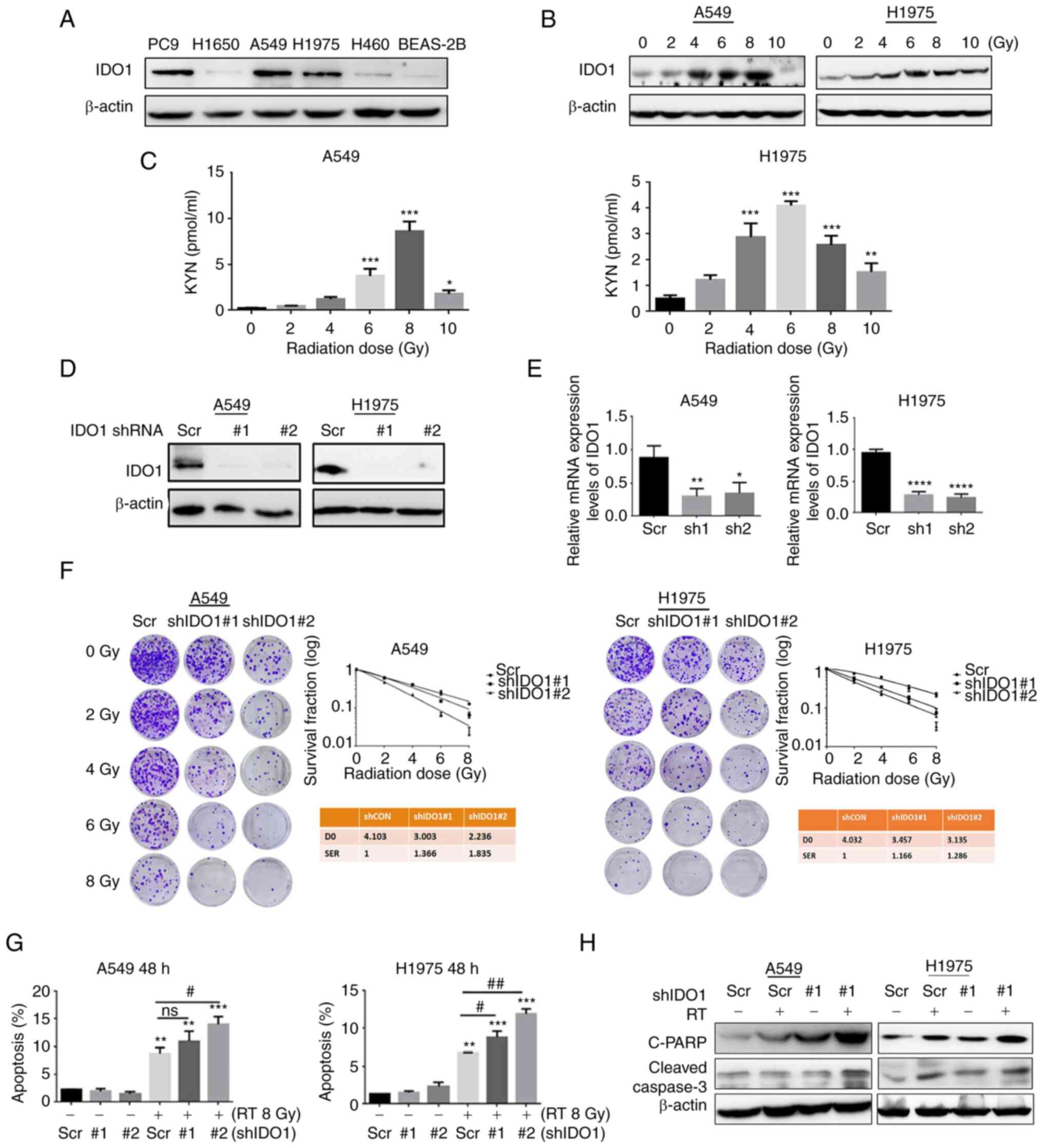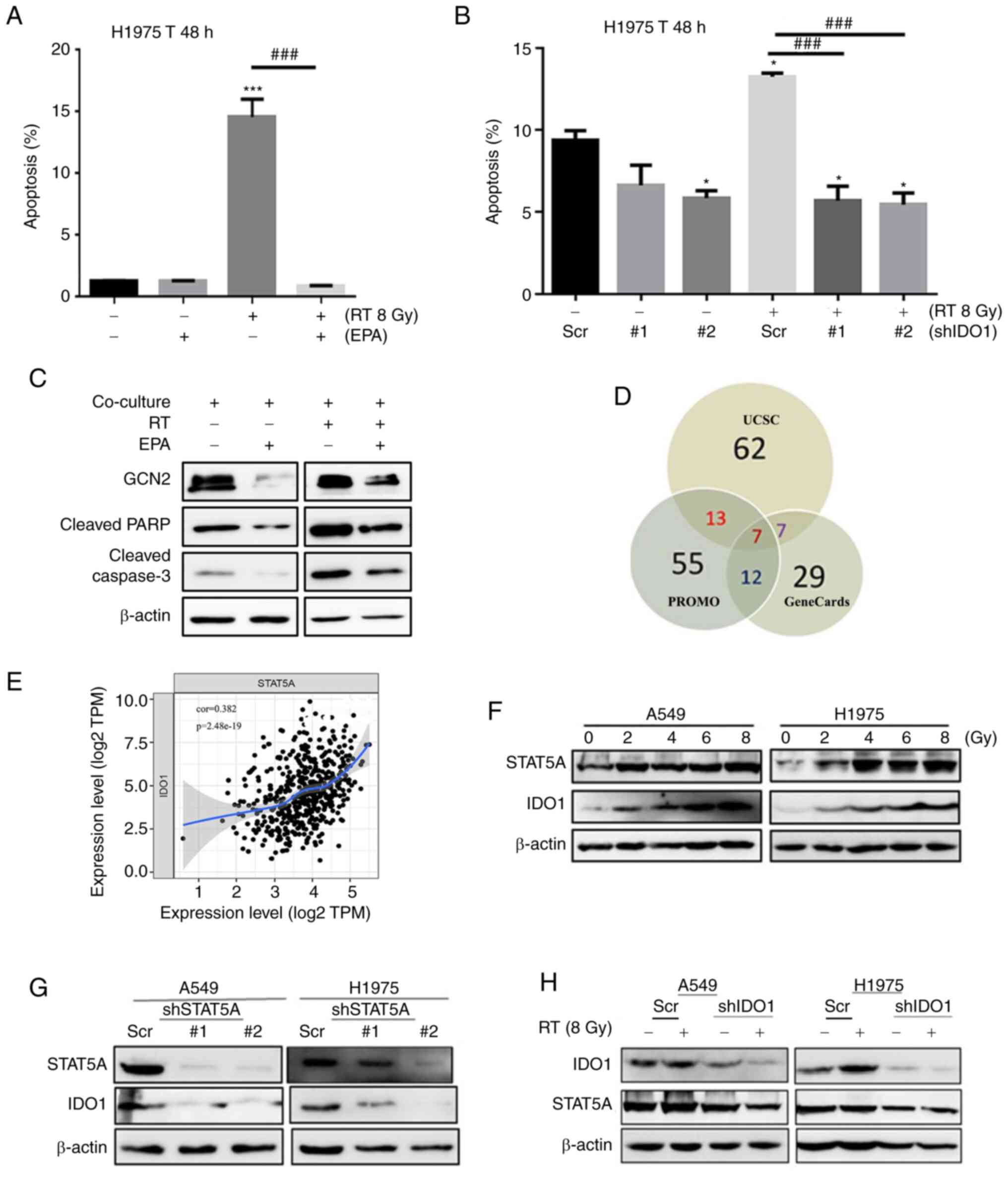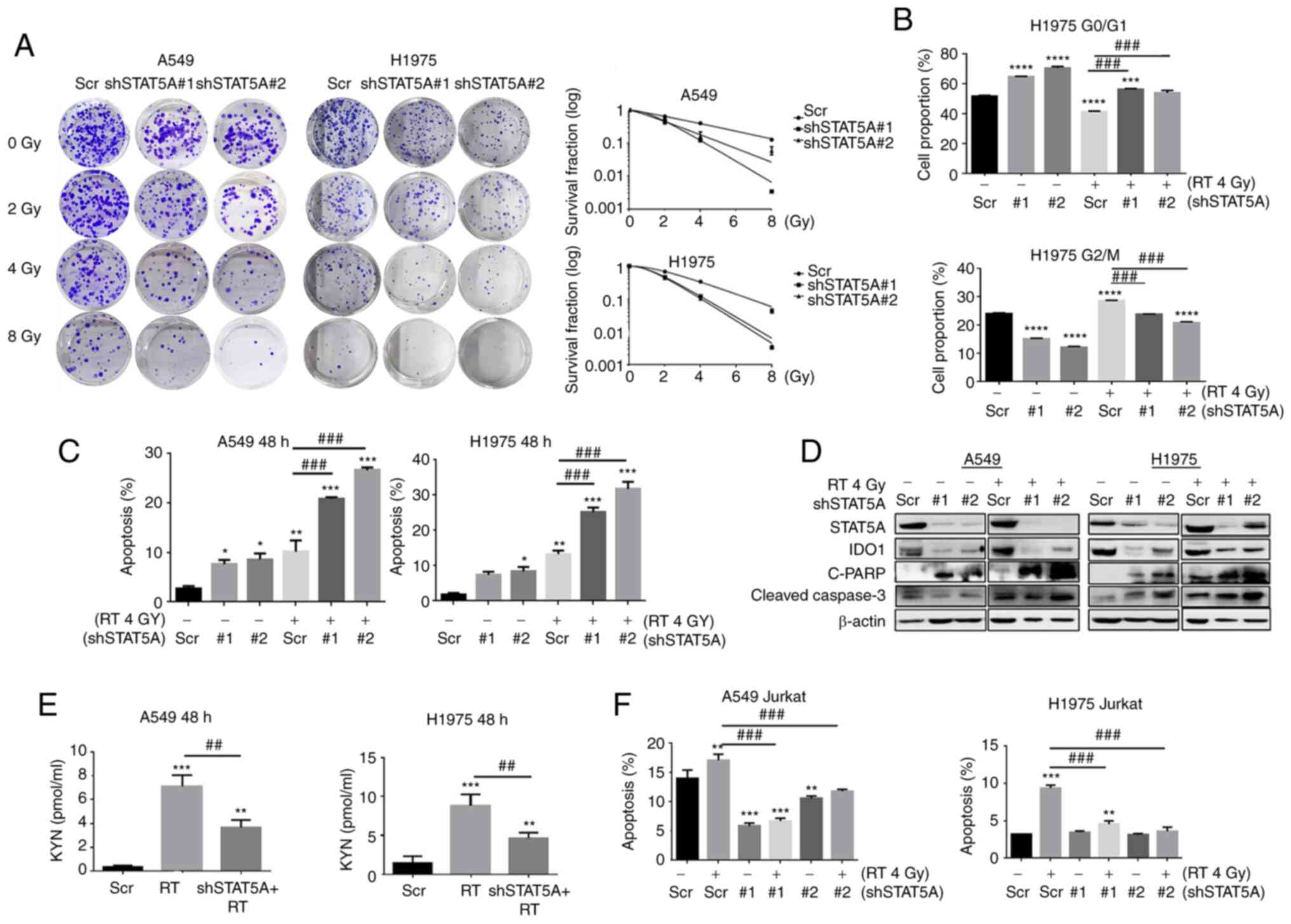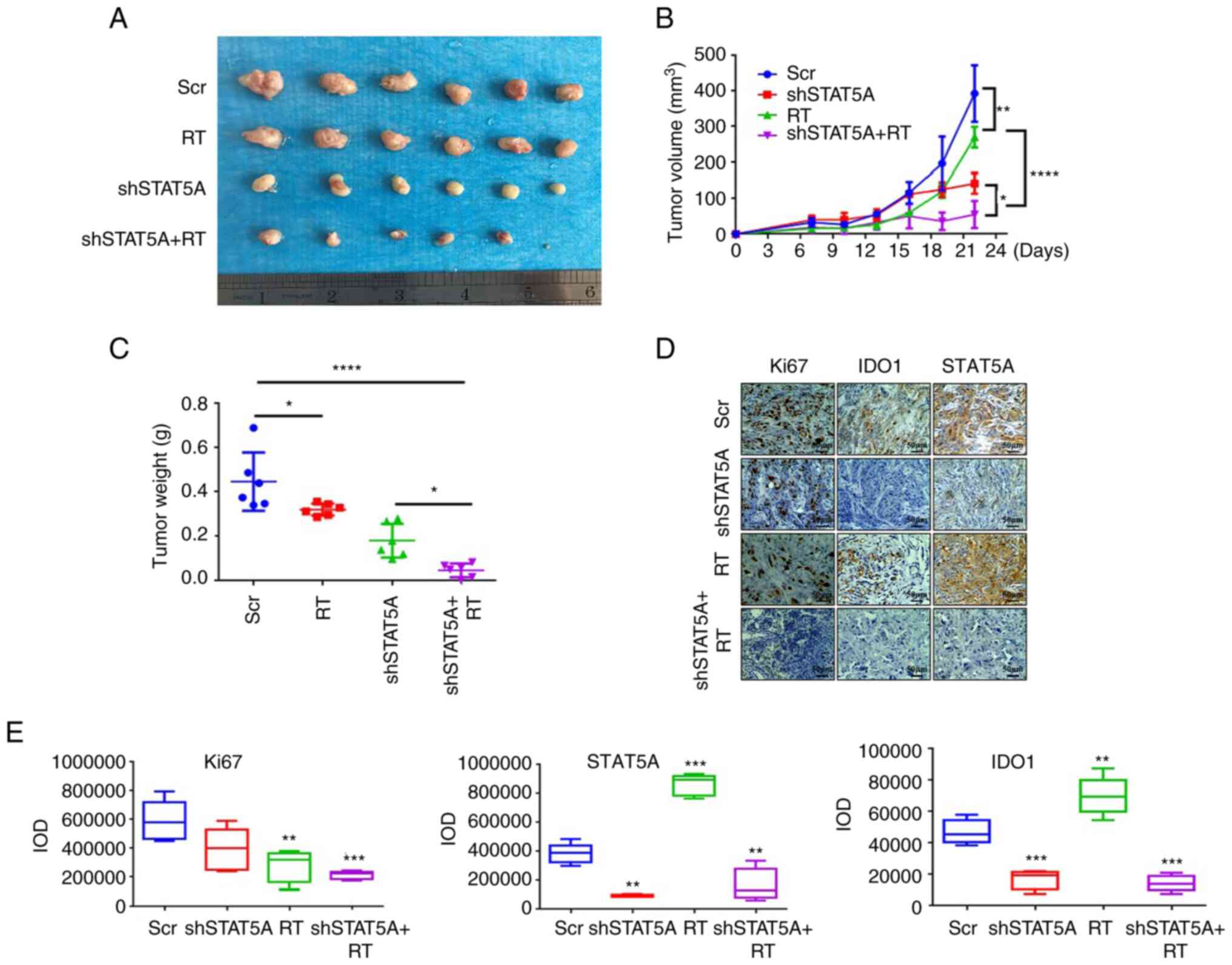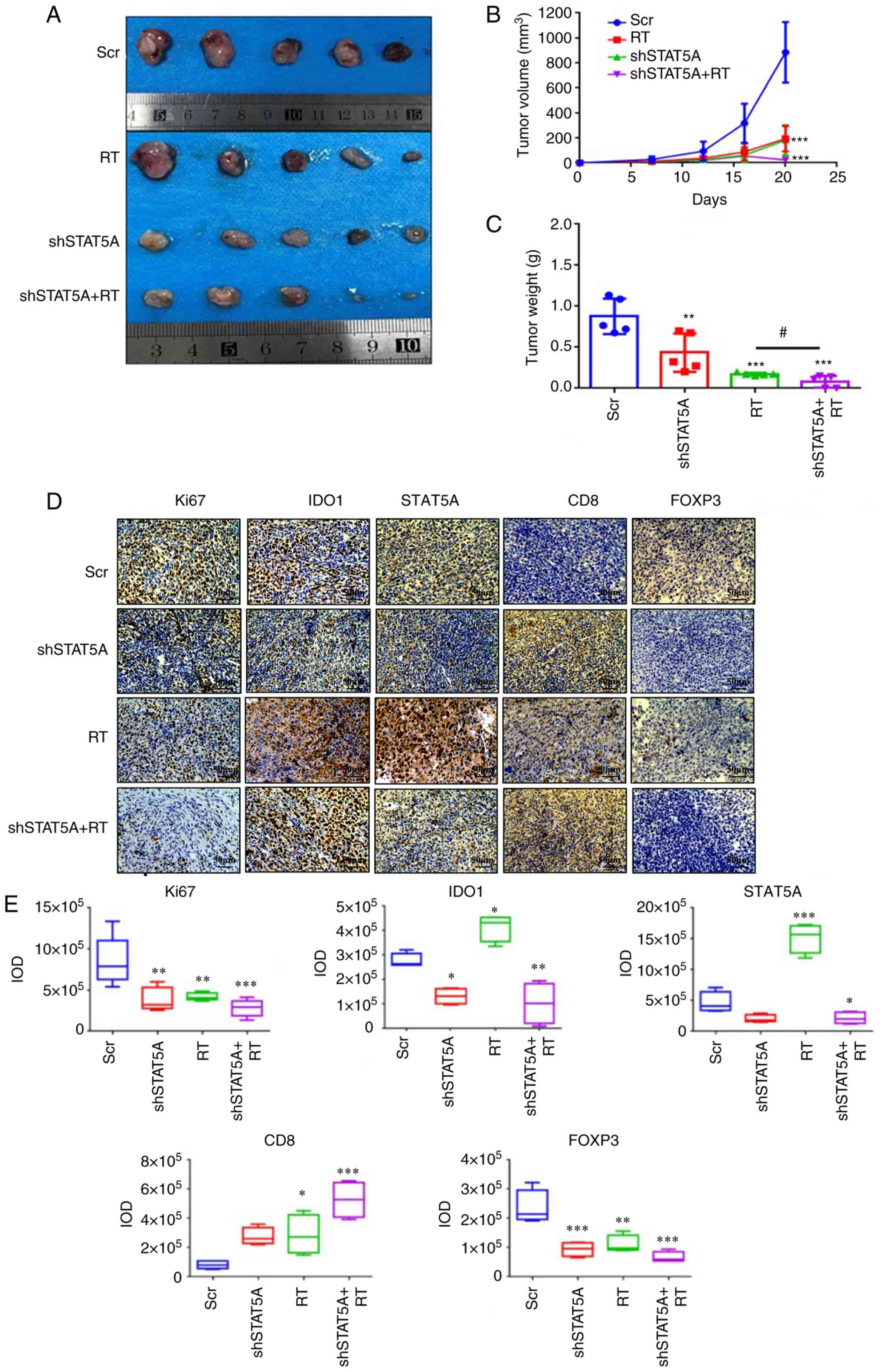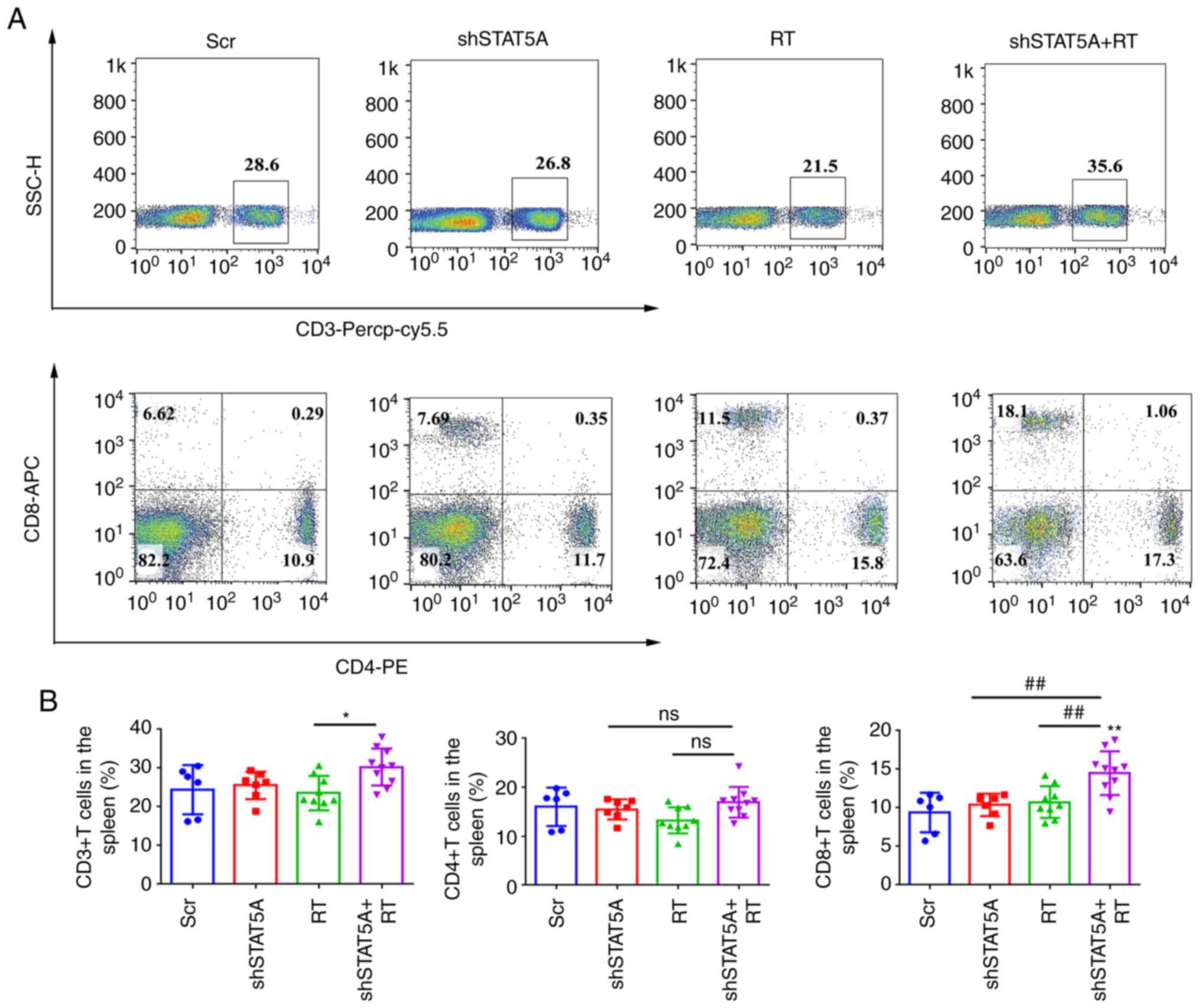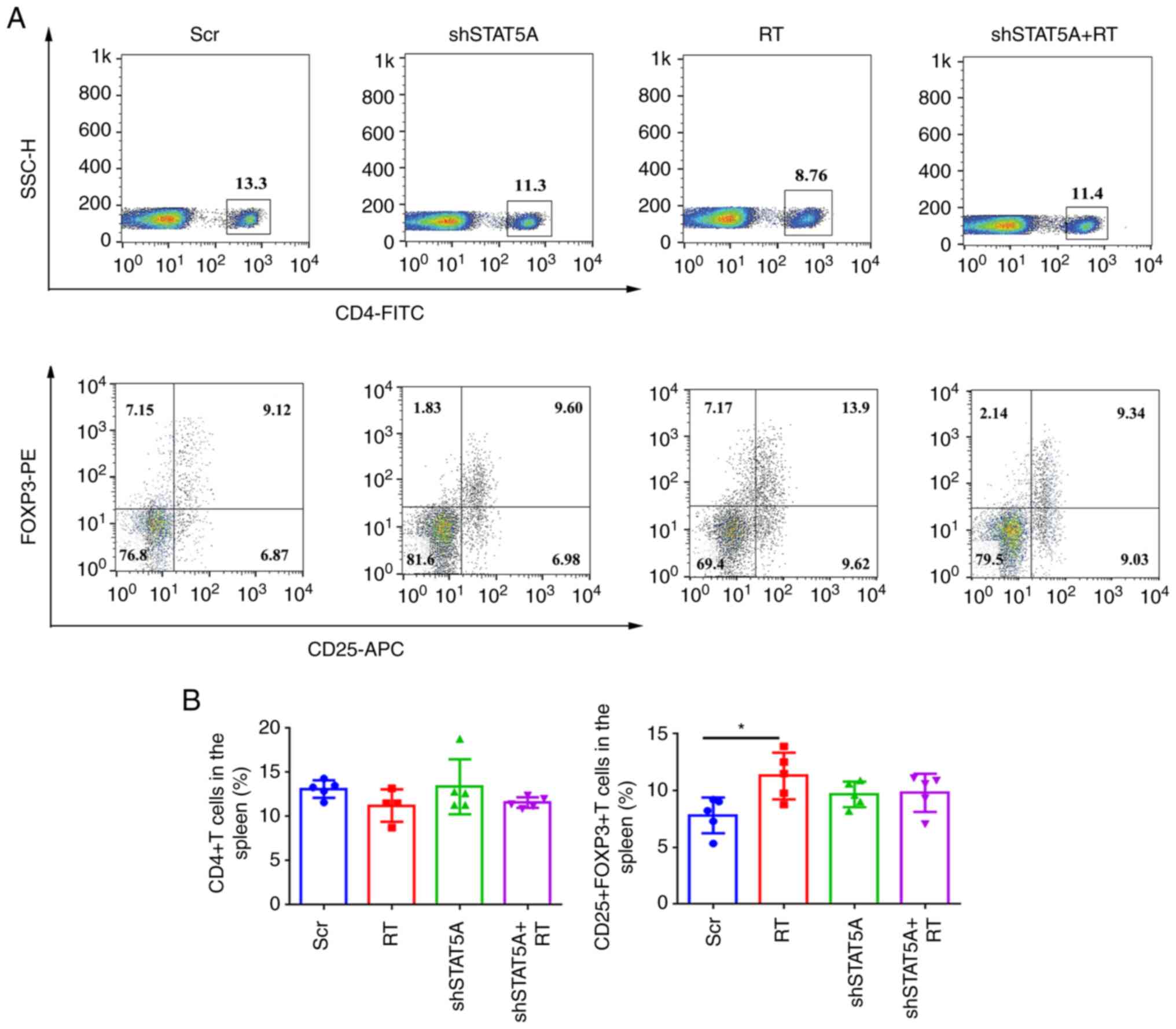|
1
|
Siegel RL, Miller KD, Fuchs HE and Jemal
A: Cancer statistics, 2021. CA Cancer J Clin. 71:7–33. 2021.
View Article : Google Scholar : PubMed/NCBI
|
|
2
|
Global Burden of Disease Cancer
Collaboration; Fitzmaurice C, Akinyemiju TF, Al Lami FH, Alam T,
Alizadeh-Navaei R, Allen C, Alsharif U, Alvis-Guzman N, Amini E, et
al: Global, regional, and national cancer incidence, mortality,
years of life lost, years lived with disability, and
disability-adjusted life-years for 29 cancer groups, 1990 to 2016:
A systematic analysis for the global burden of disease study. JAMA
Oncol. 4:1553–688. 2018. View Article : Google Scholar : PubMed/NCBI
|
|
3
|
Chen Y, Peng X, Zhou Y, Xia K and Zhuang
W: Comparing the benefits of chemoradiotherapy and chemotherapy for
resectable stage III A/N2 non-small cell lung cancer: A
meta-analysis. World J Surg Oncol. 16:82018. View Article : Google Scholar : PubMed/NCBI
|
|
4
|
Herbst RS, Morgensztern D and Boshoff C:
The biology and management of non-small cell lung cancer. Nature.
553:446–454. 2018. View Article : Google Scholar : PubMed/NCBI
|
|
5
|
Reck M and Rabe KF: Precision diagnosis
and treatment for advanced non-small-cell lung cancer. N Engl J
Med. 377:849–861. 2017. View Article : Google Scholar : PubMed/NCBI
|
|
6
|
Herrera FG, Bourhis J and Coukos G:
Radiotherapy combination opportunities leveraging immunity for the
next oncology practice. CA Cancer J Clin. 67:65–85. 2017.
View Article : Google Scholar
|
|
7
|
Chen Y, Gao M, Huang Z, Yu J and Meng X:
SBRT combined with PD-1/PD-L1 inhibitors in NSCLC treatment: A
focus on the mechanisms, advances, and future challenges. J Hematol
Oncol. 13:1052020. View Article : Google Scholar : PubMed/NCBI
|
|
8
|
Ngwa W, Irabor OC, Schoenfeld JD, Hesser
J, Demaria S and Formenti SC: Using immunotherapy to boost the
abscopal effect. Nat Rev Cancer. 18:313–322. 2018. View Article : Google Scholar : PubMed/NCBI
|
|
9
|
Horn L, Mansfield AS, Szczęsna A, Havel L,
Krzakowski M, Hochmair MJ, Huemer F, Losonczy G, Johnson ML, Nishio
M, et al: First-line atezolizumab plus chemotherapy in
extensive-stage small-cell lung cancer. N Engl J Med.
379:2220–2229. 2018. View Article : Google Scholar : PubMed/NCBI
|
|
10
|
Brooks ED and Chang JY: Time to abandon
single-site irradiation for inducing abscopal effects. Nat Rev Clin
Oncol. 16:123–135. 2019. View Article : Google Scholar
|
|
11
|
Zheng X, Sun Y, Ye K, Fan C, Wang X, Yang
Y, Jiao R and Ge H: Stereotactic ablative radiotherapy as single
treatment for early stage non-small cell lung cancer: A single
institution analysis. Thoracic Cancer. 12:899–905. 2021. View Article : Google Scholar : PubMed/NCBI
|
|
12
|
Zheng XL, Liu ML, Wang XH, Sun Y, Song S,
Yang Y, Jiao R, Ye K, Fan C and Ge H: Analysis of clinical outcomes
and prognostic factors in 109 patients with early-stage non-small
cell lung cancer treated with stereotactic ablation radiotherapy.
Chin J Radiat Oncol. 29:1031–1036. 2020.In Chinese.
|
|
13
|
Gettinger SN, Horn L, Gandhi L, Spigel DR,
Antonia SJ, Rizvi NA, Powderly JD, Heist RS, Carvajal RD, Jackman
DM, et al: Overall survival and long-term safety of nivolumab
(anti-programmed death 1 antibody, BMS-936558, ONO-4538) in
patients with previously treated advanced non-small-cell lung
cancer. J Clin Oncol. 33:2004–2012. 2015. View Article : Google Scholar : PubMed/NCBI
|
|
14
|
Procureur A, Simonaggio A, Bibault JE,
Oudard S and Vano YA: Enhance the immune checkpoint inhibitors
efficacy with radiotherapy induced immunogenic cell death: A
comprehensive review and latest developments. Cancers (Basel).
13:6782021. View Article : Google Scholar : PubMed/NCBI
|
|
15
|
Theelen WSME, Chen D, Verma V, Hobbs BP,
Peulen HMU, Aerts JGJV, Bahce I, Niemeijer ALN, Chang JY, de Groot
PM, et al: Pembrolizumab with or without radiotherapy for
metastatic non-small-cell lung cancer: A pooled analysis of two
randomised trials. Lancet Respir Med. 9:467–475. 2021. View Article : Google Scholar
|
|
16
|
Zhou QH, Han H, Lu JB, Liu TY, Huang KB,
Deng CZ, Li ZS, Chen JP, Yao K, Qin ZK, et al: Up-regulation of
indoleamine 2,3-dioxygenase 1 (IDO1) expression and catalytic
activity is associated with immunosuppression and poor prognosis in
penile squamous cell carcinoma patients. Cancer Commun (Lond).
40:3–15. 2020. View Article : Google Scholar : PubMed/NCBI
|
|
17
|
Wei L, Wu N, Wei F, Li F, Zhang Y, Liu J
and Ren X: Prognosis significance of indoleamine 2, 3-dioxygenase,
programmed death ligand-1 and tumor-infiltrating immune cells in
microenvironment of breast cancer. Int Immunopharmacol.
84:1065062020. View Article : Google Scholar : PubMed/NCBI
|
|
18
|
Brandacher G, Perathoner A, Ladurner R,
Schneeberger S, Obrist P, Winkler C, Werner ER, Werner-Felmayer G,
Weiss HG, Göbel G, et al: Prognostic value of indoleamine
2,3-dioxygenase expression in colorectal cancer: Effect on
tumor-infiltrating T cells. Clin Cancer Res. 12:1144–1151. 2006.
View Article : Google Scholar : PubMed/NCBI
|
|
19
|
Kiyozumi Y, Baba Y, Okadome K, Yagi T,
Ishimoto T, Iwatsuki M, Miyamoto Y, Yoshida N, Watanabe M, Komohara
Y and Baba H: IDO1 expression is associated with immune tolerance
and poor prognosis in patients with surgically resected esophageal
cancer. Ann Surg. 269:1101–1108. 2019. View Article : Google Scholar : PubMed/NCBI
|
|
20
|
Halaby MJ, Hezaveh K, Lamorte S, Ciudad
MT, Kloetgen A, MacLeod BL, Guo M, Chakravarthy A, Medina TDS, Ugel
S, et al: GCN2 drives macrophage and MDSC function and
immunosuppression in the tumor microenvironment. Sci Immunol.
4:eaax81892019. View Article : Google Scholar : PubMed/NCBI
|
|
21
|
Zhu YY, Hu M, Xu QH, Sun X, Ye Y, Liu Y,
Feng J and Xu Y: The correlation between serum indoleamine
2,3-dioxygenase and the prognosis of stereotactic radiotherapy for
early non-small cell lung cancer. Chin J Radiol Med Prot.
40:512–518. 2020.In Chinese.
|
|
22
|
Jiao R, Zheng X, Sun Y, Feng Z, Song S and
Ge H: IDO1 expression increased after neoadjuvant therapy predicts
poor pathologic response and prognosis in esophageal squamous cell
carcinoma. Front Oncol. 10:10992020. View Article : Google Scholar : PubMed/NCBI
|
|
23
|
Le Naour J, Galluzzi L, Zitvogel L,
Kroemer G and Vacchelli E: Trial watch: IDO inhibitors in cancer
therapy. Oncoimmunology. 9:17776252020. View Article : Google Scholar : PubMed/NCBI
|
|
24
|
Li A, Barsoumian HB, Schoenhals JE,
Caetano MS, Wang X, Menon H, Valdecanas DR, Niknam S, Younes AI,
Cortez MA and Welsh JW: IDO1 inhibition overcomes radiation-induced
'rebound immune suppression' by reducing numbers of IDO1-expressing
myeloid-derived suppressor cells in the tumor microenvironment. Int
J Radiat Oncol Biol Phys. 104:903–912. 2019. View Article : Google Scholar : PubMed/NCBI
|
|
25
|
Grobben Y, de Man J, van Doornmalen AM,
Muller M, Willemsen-Seegers N, Vu-Pham D, Mulder WR, Prinsen MBW,
de Wit J, Sterrenburg JG, et al: Targeting indoleamine
2,3-dioxygenase in cancer models using the novel small molecule
inhibitor NTRC 3883-0. Front Immunol. 11:6094902021. View Article : Google Scholar : PubMed/NCBI
|
|
26
|
Kocher F, Amann A, Zimmer K, Geisler S,
Fuchs D, Pichler R, Wolf D, Kurz K, Seeber A and Pircher A: High
indoleamine-2,3-dioxygenase 1 (IDO) activity is linked to primary
resistance to immunotherapy in non-small cell lung cancer (NSCLC).
Transl Lung Cancer Res. 10:304–313. 2021. View Article : Google Scholar : PubMed/NCBI
|
|
27
|
Maurer B, Kollmann S, Pickem J,
Hoelbl-Kovacic A and Sexl V: STAT5A and STAT5B-twins with different
personalities in hematopoiesis and leukemia. Cancers (Basel).
11:17262019. View Article : Google Scholar : PubMed/NCBI
|
|
28
|
Koptyra M, Gupta S, Talati P and
Nevalainen MT: Signal transducer and activator of transcription
5a/b: Biomarker and therapeutic target in prostate and breast
cancer. Int J Biochem Cell Biol. 43:1417–1421. 2011. View Article : Google Scholar : PubMed/NCBI
|
|
29
|
Brachet-Botineau M, Deynoux M, Vallet N,
Polomski M, Juen L, Hérault O, Mazurier F, Viaud-Massuard MC, Prié
G and Gouilleux F: A novel inhibitor of STAT5 signaling overcomes
chemotherapy resistance in myeloid leukemia. Cancers (Basel).
11:20432019. View Article : Google Scholar
|
|
30
|
Sánchez-Ceja SG, Reyes-Maldonado E,
Vázquez-Manríquez ME, López-Luna JJ, Belmont A and
Gutiérrez-Castellanos S: Differential expression of STAT5 and
Bcl-xL, and high expression of Neu and STAT3 in non-small-cell lung
carcinoma. Lung Cancer. 54:163–168. 2006. View Article : Google Scholar : PubMed/NCBI
|
|
31
|
Maranto C, Udhane V, Hoang DT, Gu L,
Alexeev V, Malas K, Cardenas K, Brody JR, Rodeck U, Bergom C, et
al: STAT5A/B blockade sensitizes prostate cancer to radiation
through inhibition of RAD51 and DNA repair. Clin Cancer Res.
24:1917–1931. 2018. View Article : Google Scholar : PubMed/NCBI
|
|
32
|
Chang JY, Senan S, Paul MA, Mehran RJ,
Louie AV, Balter P, Groen HJ, McRae SE, Widder J, Feng L, et al:
Stereotactic ablative radiotherapy versus lobectomy for operable
stage I non-small-cell lung cancer: A pooled analysis of two
randomised trials. Lancet Oncol. 16:630–637. 2015. View Article : Google Scholar : PubMed/NCBI
|
|
33
|
Livak KJ and Schmittgen TD: Analysis of
relative gene expression data using real-time quantitative PCR and
the 2(-Delta C(T)) method. Methods. 25:402–408. 2001. View Article : Google Scholar
|
|
34
|
Low HY, Lee YC, Lee YJ, Wang HL, Chen YI,
Chien PJ, Li ST and Chang WW: Reciprocal regulation between
indoleamine 2,3-dioxigenase 1 and notch1 involved in radiation
response of cervical cancer stem cells. Cancers (Basel).
12:15472020. View Article : Google Scholar : PubMed/NCBI
|
|
35
|
Lou Q, Liu R, Yang X, Li W, Huang L, Wei
L, Tan H, Xiang N, Chan K, Chen J and Liu H: miR-448 targets IDO1
and regulates CD8+ T cell response in human colon
cancer. J Immunother Cancer. 7:2102019. View Article : Google Scholar
|
|
36
|
Palma DA, Olson R, Harrow S, Gaede S,
Louie AV, Haasbeek C, Mulroy L, Lock M, Rodrigues GB, Yaremko BP,
et al: Stereotactic ablative radiotherapy versus standard of care
palliative treatment in patients with oligometastatic cancers
(SABR-COMET): A randomised, phase 2, open-label trial. Lancet.
393:2051–2058. 2019. View Article : Google Scholar : PubMed/NCBI
|
|
37
|
Crittenden M, Kohrt H, Levy R, Jones J,
Camphausen K, Dicker A, Demaria S and Formenti S: Current clinical
trials testing combinations of immunotherapy and radiation. Semin
Radiat Oncol. 25:54–64. 2015. View Article : Google Scholar :
|
|
38
|
Maleki Vareki S, Rytelewski M, Figueredo
R, Chen D, Ferguson PJ, Vincent M, Min W, Zheng X and Koropatnick
J: Indoleamine 2,3-dioxygenase mediates immune-independent human
tumor cell resistance to olaparib, gamma radiation, and cisplatin.
Oncotarget. 5:2778–2791. 2014. View Article : Google Scholar : PubMed/NCBI
|
|
39
|
Thaker AI, Rao MS, Bishnupuri KS, Kerr TA,
Foster L, Marinshaw JM, Newberry RD, Stenson WF and Ciorba MA: IDO1
metabolites activate β-catenin signaling to promote cancer cell
proliferation and colon tumorigenesis in mice. Gastroenterology.
145:416–425. e1–e4. 2013. View Article : Google Scholar
|
|
40
|
Chen B, Alvarado DM, Iticovici M, Kau NS,
Park H, Parikh PJ, Thotala D and Ciorba MA: Interferon-induced IDO1
mediates radiation resistance and is a therapeutic target in
colorectal cancer. Cancer Immunol Res. 8:451–464. 2020. View Article : Google Scholar : PubMed/NCBI
|
|
41
|
Wang LT, Chiou SS, Chai CY, His E,
Yokoyama KK, Wang SN, Huang SK and Hsu SH: Intestine-specific
homeobox gene ISX integrates IL6 signaling, tryptophan catabolism,
and immune suppression. Cancer Res. 77:4065–4077. 2017. View Article : Google Scholar : PubMed/NCBI
|
|
42
|
Maj T, Wang W, Crespo J, Zhang H, Wang W,
Wei S, Zhao L, Vatan L, Shao I, Szeliga W, et al: Oxidative stress
controls regulatory T cell apoptosis and suppressor activity and
PD-L1-blockade resistance in tumor. Nat Immunol. 18:1332–1341.
2017. View Article : Google Scholar : PubMed/NCBI
|
|
43
|
Maruyama T, Li J, Vaque JP, Konkel JE,
Wang W, Zhang B, Zhang P, Zamarron BF, Yu D, Wu Y, et al: Control
of the differentiation of regulatory T cells and T(H)17 cells by
the DNA-binding inhibitor Id3. Nat Immunol. 12:86–95. 2011.
View Article : Google Scholar
|
|
44
|
Zhang T, Yu H, Ni C, Zhang T, Liu L, Lv Q,
Zhang Z, Wang Z, Wu D, Wu P, et al: Hypofractionated stereotactic
radiation therapy activates the peripheral immune response in
operable stage I non-small-cell lung cancer. Sci Rep. 7:48662017.
View Article : Google Scholar : PubMed/NCBI
|
|
45
|
Cao M, Cabrera R, Xu Y, Liu C and Nelson
D: Gamma irradiation alters the phenotype and function of CD4+CD25+
regulatory T cells. Cell Biol Int. 33:565–571. 2009. View Article : Google Scholar : PubMed/NCBI
|
|
46
|
Mortezaee K, Parwaie W, Motevaseli E,
Mirtavoos-Mahyari H, Musa AE, Shabeeb D, Esmaely F, Najafi M and
Farhood B: Targets for improving tumor response to radiotherapy.
Int Immunopharmacol. 76:1058472019. View Article : Google Scholar : PubMed/NCBI
|















